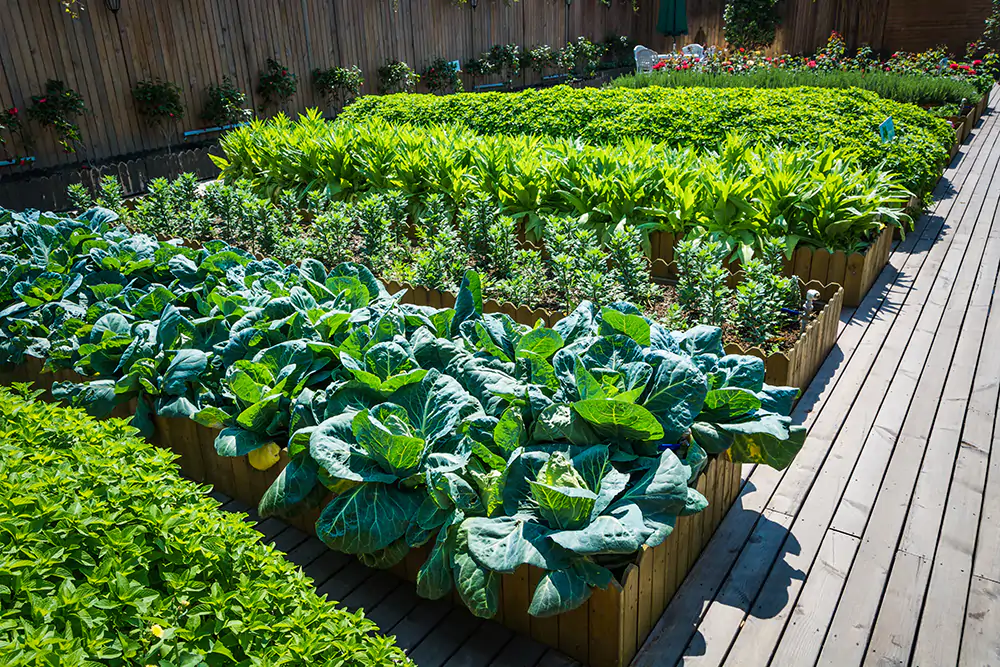How to Grow a Kitchen Garden

Kitchen gardens encourage healthier eating by providing meals free from chemicals found in store-bought produce, while simultaneously decreasing long-distance transportation needs and saving fossil fuels in the process.
Start by planning the layout for your plot. Consider planting fast-growing crops such as green beans and tomatoes to get you underway quickly.
Getting Started
Kitchen gardens are an effective way of bringing fresh produce and herbs directly into the home. Though not directly outside, it should still be accessible so you can easily reach its plants when necessary.
Before embarking on your kitchen garden venture, it is crucial that you identify which plants you wish to grow and sketch a garden plan. Familiarizing yourself with edible crops so you know their requirements regarding space, sunlight, and watering is also necessary.
Kitchen gardens provide an opportunity to discover rare heirloom varieties not readily available at grocery stores. You can start them from seeds or purchase from nurseries; many varieties are easy to maintain even in containers on balconies! Ideally, your potager should be situated in a sunny spot away from animals and insects.
Planning Your Garden
To produce large quantities of fresh food in limited space, rotating crops is key. That means planting new veggies, fruits and herbs when old ones finish producing, so as to maintain an uninterrupted stream of delicious produce!
Location is also key when creating an edible garden; you should situate it close to your house so you can quickly pick fresh herbs or tomatoes for meals, with morning sun hitting directly upon its surfaces – any obstacles such as trees or fences casting shade should ideally be removed in order to optimize results.
Once you’ve determined the ideal spot for your kitchen garden, use graph paper to draw it out on. Remember to mark which areas receive sunlight or shade so as to be prepared when watering needs arise! When drawing out the plan it will help identify which parts are sunny vs shady.
Planting
Prioritize in a kitchen garden to stay on track with your goals and avoid becoming overwhelmed. Nicole suggests prioritizing leafy greens, herbs and fruiting plants your family eats regularly as this approach allows the gardener to avoid becoming overwhelmed by all of the crops available for cultivation.
Gardeners must also carefully consider which vegetables will thrive best in their soil. Heavy clay soil needs to be broken up to allow early vegetables to come to maturity, while light sandy soil requires additional organic matter addition to improve structure and maintain moisture retention.
Introduce some unique varieties for added interest and color, such as beetroot ‘Bull’s Blood’ or curly kale ‘Candy Floss’ that add contrast and interest. When planting traditional produce alongside these more unusual varieties, be sure to test pH levels to ensure healthy soil.
Tending
Kitchen gardens require ongoing care on an ongoing basis – usually daily or weekly. Achieve this by doing something small each day: pulling up herbs for use in recipes; harvesting some sugar snap peas from their vine; or helping a tomato or cucumber find its way from dense clusters of blossoms.
Vegetable gardens may require more intensive attention, with regular planting and harvest days, but no matter your approach to gardening, your garden should always serve as a place of renewal and discovery. Witness what’s happening with plants such as greens growing, tomatoes sprouting, flowers blooming – savor the fragrances, hear buzzes buzzes buzzing as you sample flavor profiles from them all at the same time.
Kitchen gardens can be found anywhere from backyard spaces divided up into beds and pathways to be planted with edibles and flowers, to more formal settings like Cabrillo National Monument in San Diego where an impressive replica of 19th-century kitchen garden shows how vegetables and herbs were grown to supplement households’ food supplies.






